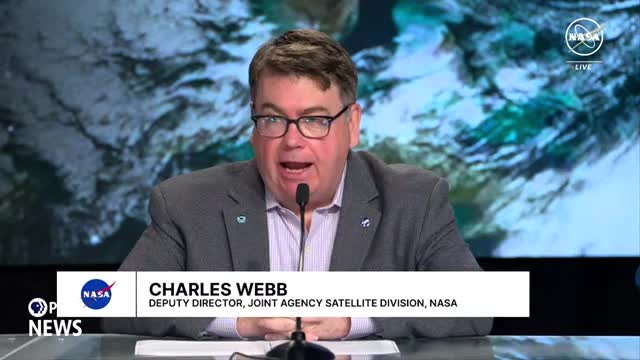NASA and NOAA prepare for launch of advanced weather satellite

This article was created by AI summarizing key points discussed. AI makes mistakes, so for full details and context, please refer to the video of the full meeting. Please report any errors so we can fix them. Report an error »

In a recent government meeting, officials from NOAA and NASA discussed the upcoming launch of the GOES U satellite, the latest addition to the GOES R series, which has been pivotal in weather forecasting since its inception in 1975. The GOES U satellite, set to launch imminently, will enhance the nation's capabilities in monitoring severe weather, including hurricanes and tornadoes, by providing advanced imagery and atmospheric measurements.
The GOES R series, which includes the previously launched GOES R, S, and T (now known as GOES 16, 17, and 18), represents the most advanced fleet of geostationary weather satellites in the United States. These satellites significantly improve the accuracy and timeliness of weather warnings, allowing meteorologists to better predict severe weather events and their potential impacts on communities.
During the meeting, Lieutenant Commander Christopher Wood, a hurricane hunter pilot with NOAA, emphasized the importance of integrating satellite data with in-situ observations from aircraft and ground-based systems. This coordinated approach is crucial for understanding rapidly evolving weather conditions, particularly within tropical cyclones, and for providing emergency managers with the information needed to protect lives and property.
The discussion also highlighted the ongoing partnership between NOAA and NASA, which has successfully operated over 60 satellites dedicated to weather forecasting and climate observations. Looking ahead, both agencies are preparing for the design phase of the GeoXO satellite system, set to be deployed in the 2030s.
As the meeting concluded, officials expressed optimism about the potential impact of the new satellite imagery on public awareness, particularly regarding space weather events. The GOES U satellite is expected to deliver real-time data that could enhance social media engagement and raise awareness of significant weather phenomena, including solar events.
The collaborative efforts of NOAA and NASA continue to play a vital role in advancing weather observation technologies, ensuring that forecasters have the tools necessary to provide accurate and timely information to the public.
The GOES R series, which includes the previously launched GOES R, S, and T (now known as GOES 16, 17, and 18), represents the most advanced fleet of geostationary weather satellites in the United States. These satellites significantly improve the accuracy and timeliness of weather warnings, allowing meteorologists to better predict severe weather events and their potential impacts on communities.
During the meeting, Lieutenant Commander Christopher Wood, a hurricane hunter pilot with NOAA, emphasized the importance of integrating satellite data with in-situ observations from aircraft and ground-based systems. This coordinated approach is crucial for understanding rapidly evolving weather conditions, particularly within tropical cyclones, and for providing emergency managers with the information needed to protect lives and property.
The discussion also highlighted the ongoing partnership between NOAA and NASA, which has successfully operated over 60 satellites dedicated to weather forecasting and climate observations. Looking ahead, both agencies are preparing for the design phase of the GeoXO satellite system, set to be deployed in the 2030s.
As the meeting concluded, officials expressed optimism about the potential impact of the new satellite imagery on public awareness, particularly regarding space weather events. The GOES U satellite is expected to deliver real-time data that could enhance social media engagement and raise awareness of significant weather phenomena, including solar events.
The collaborative efforts of NOAA and NASA continue to play a vital role in advancing weather observation technologies, ensuring that forecasters have the tools necessary to provide accurate and timely information to the public.
View full meeting
This article is based on a recent meeting—watch the full video and explore the complete transcript for deeper insights into the discussion.
View full meeting